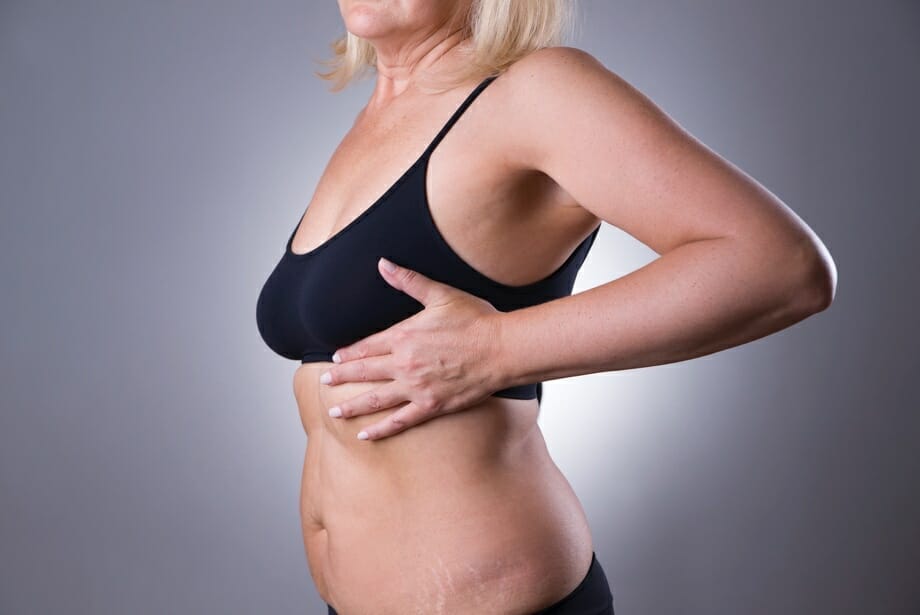
Cosmetic surgery can restore youthful shape to aging breasts
It’s another cruel trick of Mother Nature: breast tissue ages two or three years faster than other parts of the body. From the time they turn 40, most women can expect to see their breasts change in size and shape.
It’s normal for breasts to feel less firm and full as their tissue becomes more fatty and less dense with age. Breasts can appear elongated, stretched or flattened, and more prone to lumps such as cysts, fibroids, and cancer. Although most lumps are harmless, it is important to promptly show them to your doctor.
As the years go by, many women see the space between their breasts grow wider and their breasts shrink in size – sometimes by a cup size or more – unless they gain weight as they grow older. The areola, the area around the nipple, changes as well – becoming smaller or even disappearing – and nipples can point downward or turn in slightly.
Behavior matters: smoking is a significant risk factor for drooping breasts. The same can be said for other poor lifestyle choices that cause skin’s collagen to break down and lose elasticity, such as prolonged tanning, alcohol or substance abuse, drastic weight loss, and sticking to an unhealthy diet.
But no matter how healthy a lifestyle you maintain, that are many factors that impact the way breasts age that are outside women’s control:
- Genetics. If you are unhappy with how your breasts age, you can start by blaming your parents. Genes determine the size and shape of your breasts, your hormone levels, the density of your breasts and the elasticity of your skin, all of which play a significant role in how your breasts will change as you grow older.
- Pregnancy and breastfeeding. Many women complain that their breasts don’t fully contract to their original firmness after pregnancy and nursing. Changes in size caused by pregnancy weight gain and loss, as well as milk engorgement, can cause skin and ligaments to stretch, leading to stretch marks and drooping.
- Gravity. Even the perkiest breasts can’t escape the effects of gravity. Your breasts are held in place by delicate bands of fibrous tissue called Cooper’s ligaments. Over time, the collagen and elastin inside the tissue breaks down, causing the ligaments to wear out like overstretched rubber bands and become less supportive. Running or other high-impact aerobic exercise can cause the ligaments to break down faster, so make sure you find a supportive sports bra before you hit the gym.
- Menopause. The biggest changes in the size, shape, and volume of women’s breasts occur during menopause, which usually begins between the ages of 45 and 55. One of the main factors is the natural decline of estrogen, the female reproductive hormone. Estrogen levels ebb as you grow older, causing the skin and connective tissue of the breast to become less hydrated, which makes it less elastic. Less elasticity causes your breasts to lose fullness and firmness, and can give them a stretched and looser appearance. As aging continues, dense, glandular breast tissue is replaced by softer, spongier fatty tissue, which is also more likely to droop.
Although breast changes are a normal part of the aging process, cosmetic surgery can offer options to women who are unhappy with their changing appearance as they grow older. A skilled plastic surgeon can restore shape and fullness to your breasts, and replace the position of the nipples.
Breast lifts can restore breasts to a more youthful position, while breast augmentation uses silicone or saline implants to enhance their size, shape and volume. Many older women choose to combine these procedures to restore fullness while repositioning sagging breasts and nipple areas.
The stats speak to the results of these procedures. Breast augmentations are the leading cosmetic surgical procedure in the U.S., with more than 290,000 performed in 2016, according to the American Society for Plastic Surgeons (ASPS) 2016 Plastic Surgery Statistics Report. Breast lifts have increased 92 percent since 2000, with more than 101,000 procedures performed in 2016.
The largest percentage of breast lifts – nearly 40 percent – are elected by women between the ages of 40 and 54, the ASPS report found. At nearly 30 percent, this group also comprises the second-largest number of augmentations, following close behind women ages 30 to 39, who had 37 percent of these surgeries.
When performed by a qualified plastic surgeon, cosmetic surgery can help women defy the effects of gravity, genetics, and aging on their breasts. A board-certified plastic surgeon who is an expert in the procedure can deliver corrections and enhancements that restore your youthful proportions with long-lasting, natural-looking results.
Thomassen Plastic Surgery is the top choice for South Florida patients looking for an award-winning plastic surgeon who provides natural-looking results. Contact us for more information about breast augmentations, lifts, or the many other procedures we offer.
Share this Post

